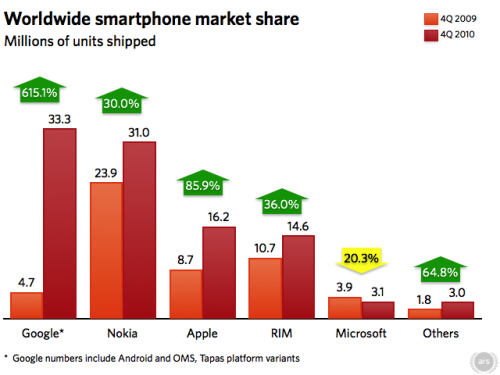Nicholas Carr had a short riff yesterday on social networking:
…[that] social networks have the effect of turning up rather than turning down the volume of our self-consciousness seems to me precisely right. The Net turns the social instinct inward, which ends up fencing in rather than freeing the self.
There was a related Guardian story recently, “Social networking under fresh attack as tide of cyber-scepticism sweeps US“.
The Guardian article is the more comical and confused. Have you been swept by the wave of skepticism lately? Me neither. The whole story screams of… an attempt to create a story. It’s a controversy! People are very upset! Academics are writing articles!
But the real story here is how astonishingly widespread social networking has become – 600 million people on FaceBook, 200 million on Twitter, 500 million on Skype – with very little social resistance. There was way more controversy about the spread of video cassettes in the 80s than there is now about the spread of on-line social – yet at the same time, FaceBook and Twitter really are changing how, and how much, people interact – a profound change.
How could a change so profound happen with so little resistance?
It can only be because it fits so naturally with how people want to interact.
It allows communication with the people users want to reach, and in the ways users want to reach them.
It allows users to curate their personas – something that everyone does in the “real world” also, but it is easier to do, and requires less use of metaphorical sharp-elbows, online than in person. Perhaps this is the reason why seriously shy folk sometimes turn more chatty on line?
It allows users to communicate without talking over anyone and without having to buttonhole someone directly (the later a big advantage of FaceBook over email).
I’m doubtful of Nicholas Carr’s point that online social is a solitary act of self-presentation, whereas real-world interactions are a chance to liberate the individual consciousness into a group setting. People are presenting themselves in the real-world at least as much; and people can brainstorm and be a group member online just as they do face-to-face.
As a startup, I would be highly skeptical of attempts to address the anti-social or privacy-invading “downsides” of social networking; much of these downsides are thing that most users don’t care about, whatever the media might like to think. The great bulk of opportunities for startups in social will come from making the experiences more fluid, more relevant, and in tying commercial opportunities to social activity in various ways that users find useful or at least acceptable.





You must be logged in to post a comment.